5 Spice Mistakes Most Beginners Make
Mistake 1 - Misunderstanding what salt does vs what spices do
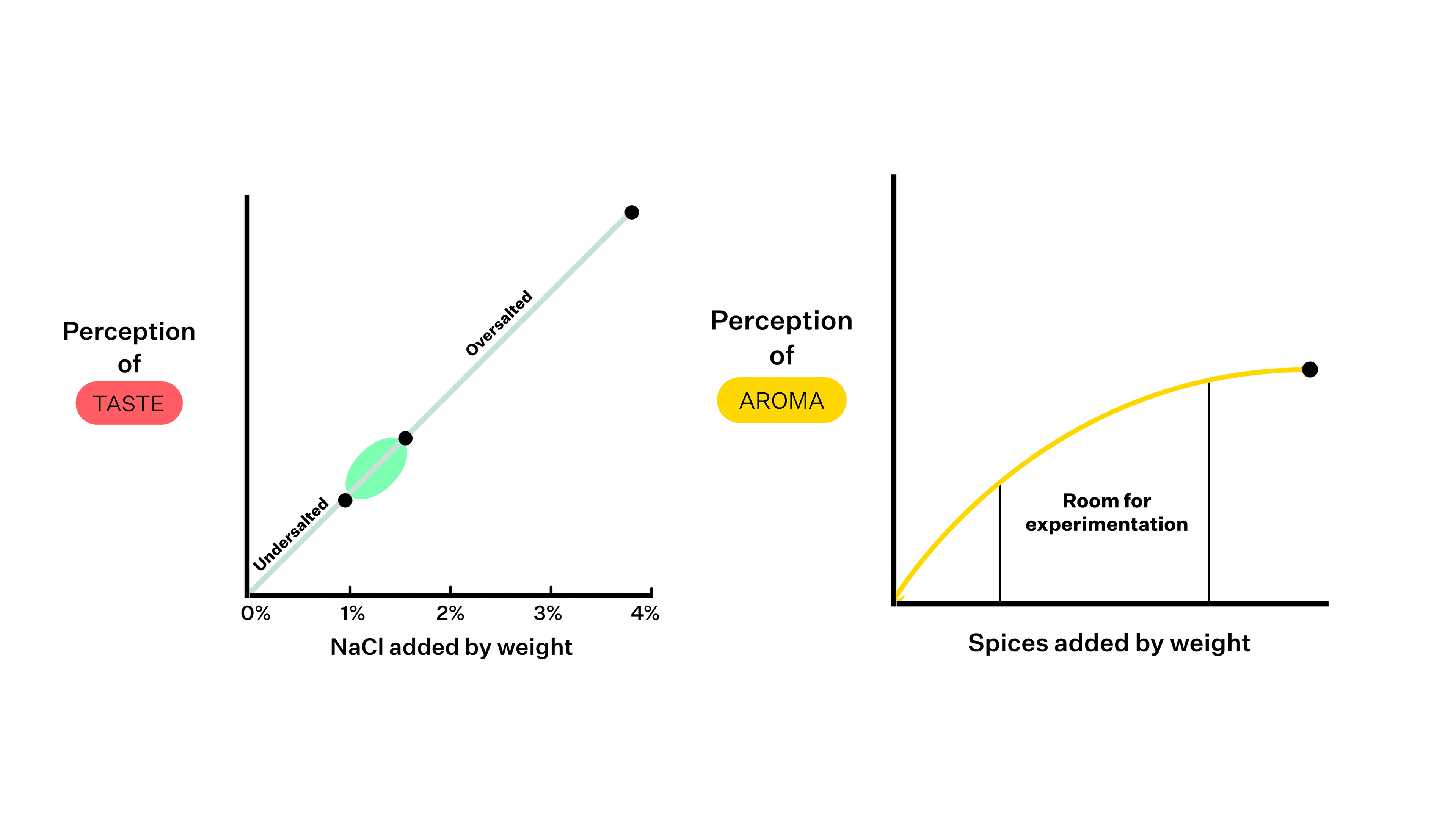
Salt affects taste, while spices affect aroma.
Salt is linear (twice as much salt doubles the saltiness), while spices aren’t (you don’t have to add an exact amount of spices for something to taste the right amount of “seasoned”).
Experiment to try

- Take a plain protein or vegetable and weigh it out into 4 equal bowls.
- Season each portion with 1%, 2%, 3%, and 4% salt by weight. Cook the ingredient samples if necessary
- Take note of how the salty taste doubles, triples, and then quadruples. Observe when the ingredient goes from “seasoned” to noticeably “salty” or over-seasoned.
Application
To make something taste “well seasoned”, you need the right amount of salt first (usually 1-1.5%). Then, spices can be added for extra aromatic flavor.
- No amount of spices can make something taste “seasoned” without the appropriate amount of salt.
Mistake 2 - Only following recipes and using spice rubs
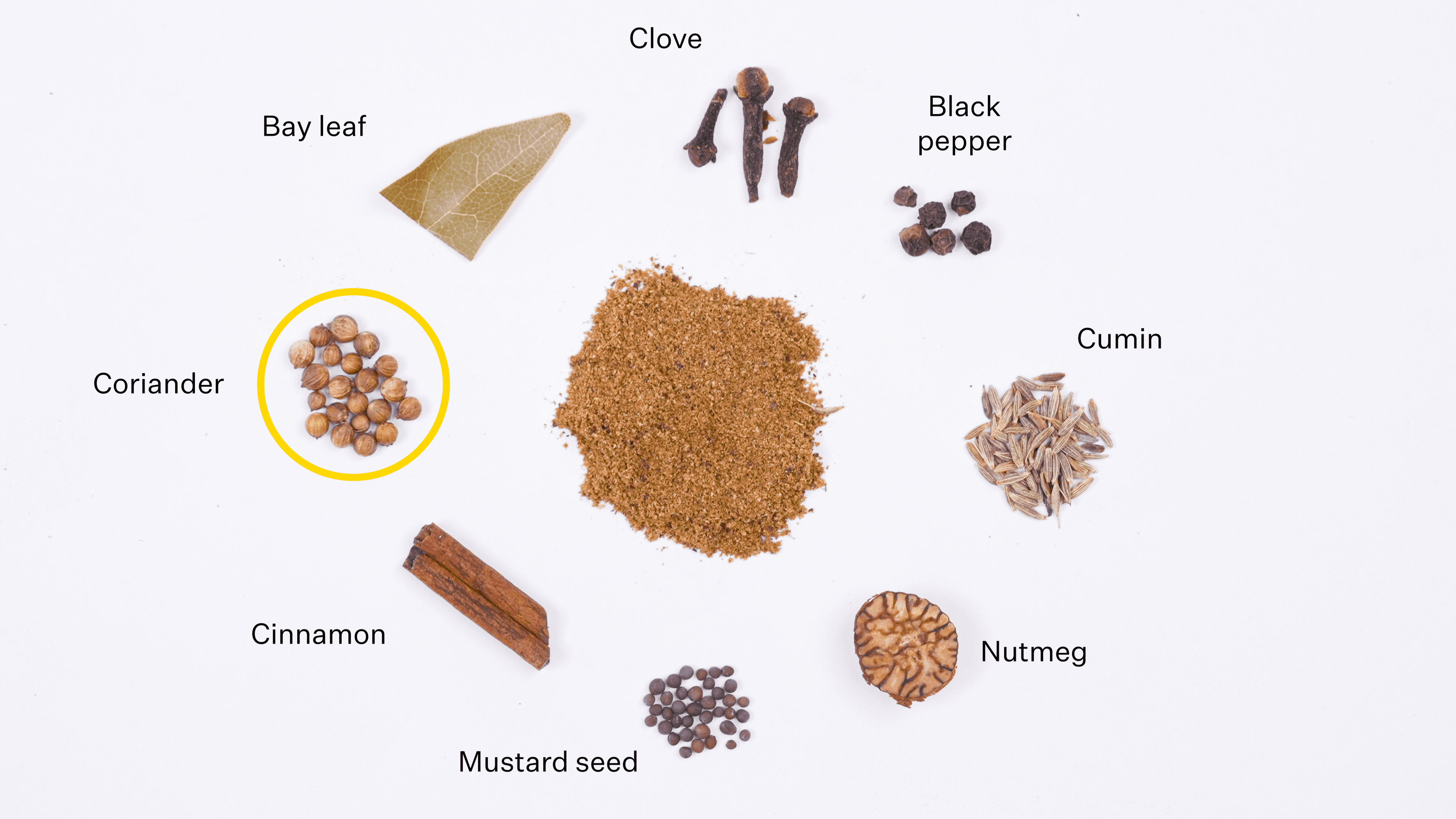
Individual spices can contain dozens (or sometimes hundreds) of aroma compounds. It’s hard to understand what a spice contributes to a recipe when it is competing with other spices and ingredients. But when you use a spice alone, you can detect those subtle different notes in a single spice.
Experiment to try
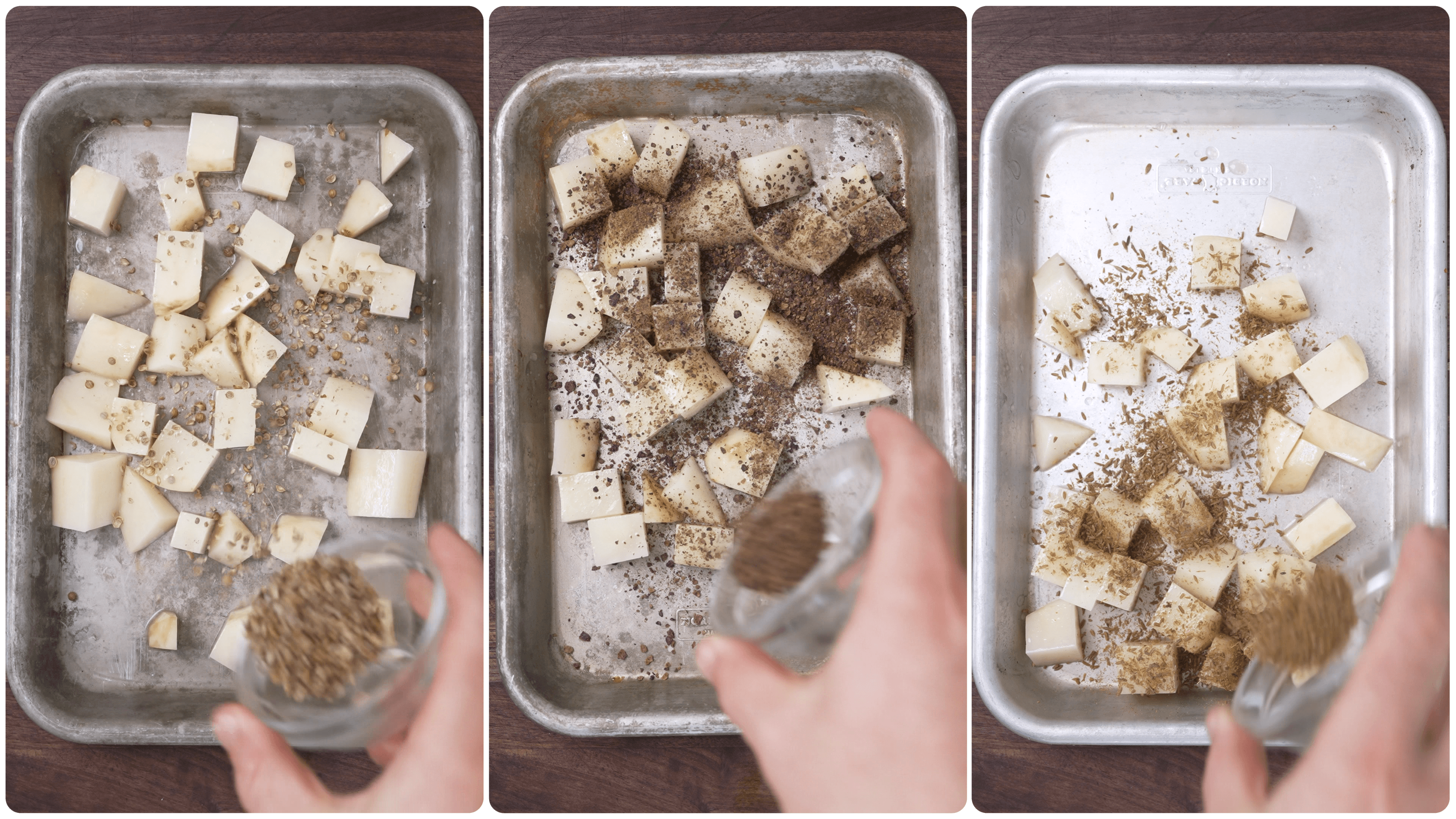
- Take a basic vegetable or protein, dice into cubes, then add some salt and oil. Separate into 3 piles.
- Pick out any 3 individual spices.
- Season each of the three piles with a different spice, then cook the ingredient through.
- First, taste each spiced pile individually to understand what the spice does on its own. Then start mixing and matching bites from the three piles and observe how the different combinations pair together.
Application
To better understand spices, start cooking with individual spices on ingredients, then slowly pair different spices together.
If you only use spice mixes, you’ll never learn how to pair spices on your own.
Mistake 3 - Not using enough spices
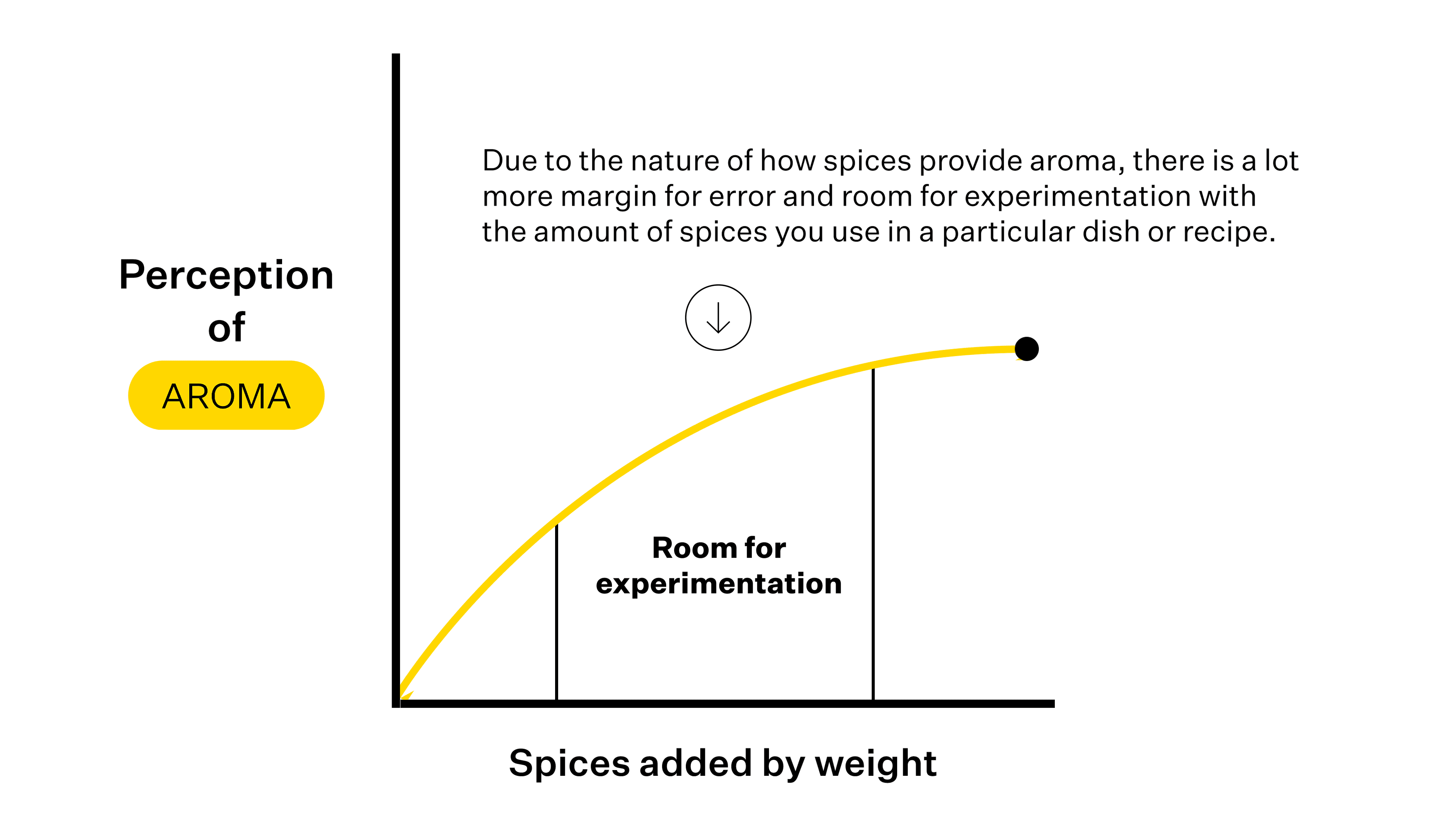
Most home cooks aren’t using enough spices. Unlike salt (see Mistake #1), you can add a wide range of spice amounts to food without overdoing it.
Restaurants always use fresh, potent spices because they finish and buy new spices frequently. Many home spice cabinets have older jars of spices that go stale over time. These spices are less aromatic, so you need to use more to compensate.
Experiment to try
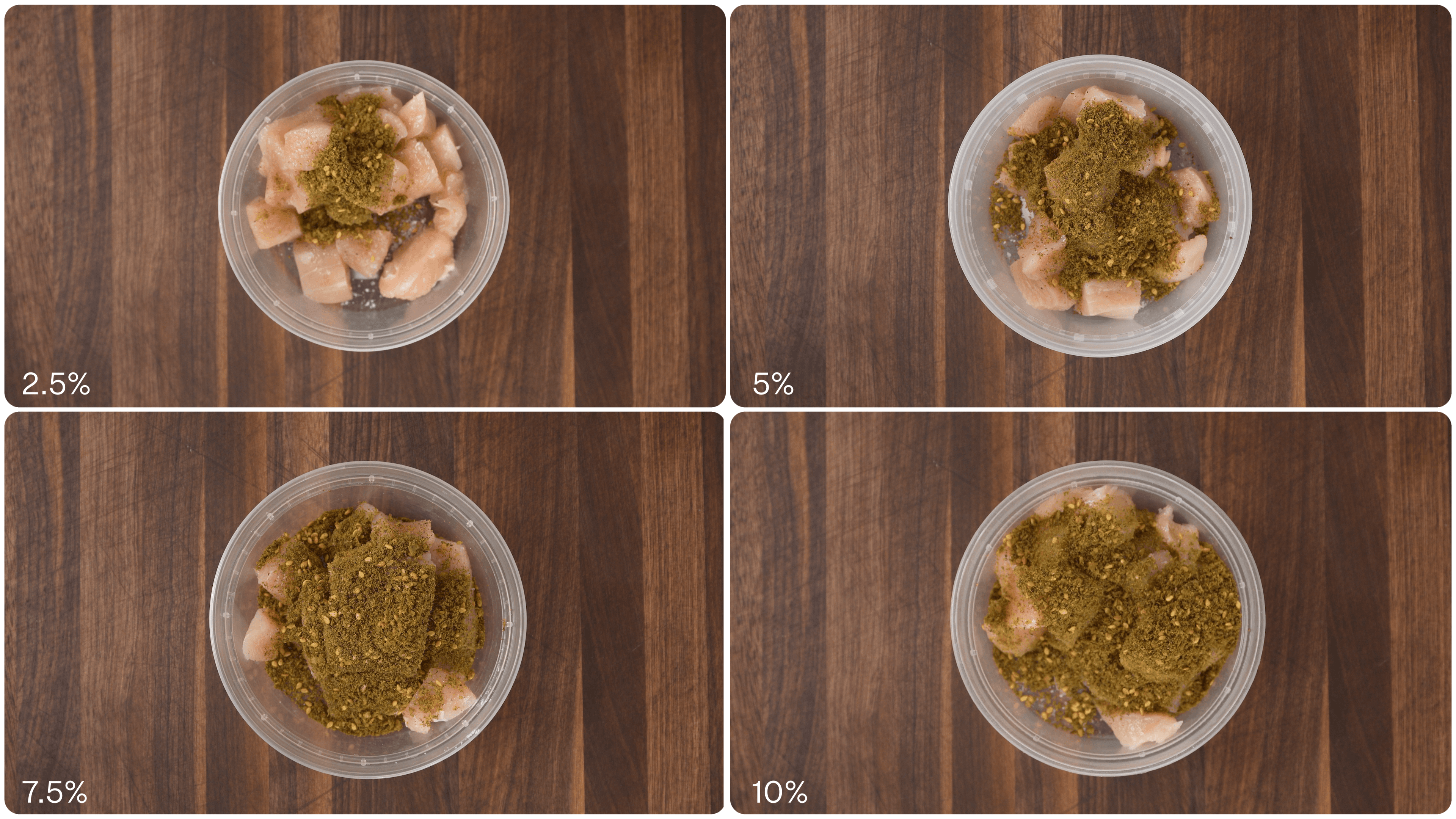
- Take a basic vegetable or protein, dice into cubes, then add some salt and oil. Separate into 4 piles.
- Choose a spice blend or a single spice. Add 2.5%, 5%, 7.5%, and 10% spice (by weight) to each of the four piles, respectively. Cook the 4 piles separately.
- Taste each pile. Notice how even though the spice amount doubled, tripled, and quadrupled, it doesn’t necessarily scale in flavor like salt does. Note which % range is ideal for that spice.
Application
Don’t be afraid to use more spices than what a recipe calls for. You need to push the spice limits to learn and find out what you like and what is actually too much.
- If a dish is being cooked for a very long time (a braise, smoked bbq, etc), you can add way more spices than you think, they will be tempered by the long exposure to heat.
Another way to maximize spice aroma is to buy whole spices instead of pre-ground. These last much longer and maintain their potency over time. Just grind right before cooking.
Mistake 4 - Only using spices at the beginning of cooking
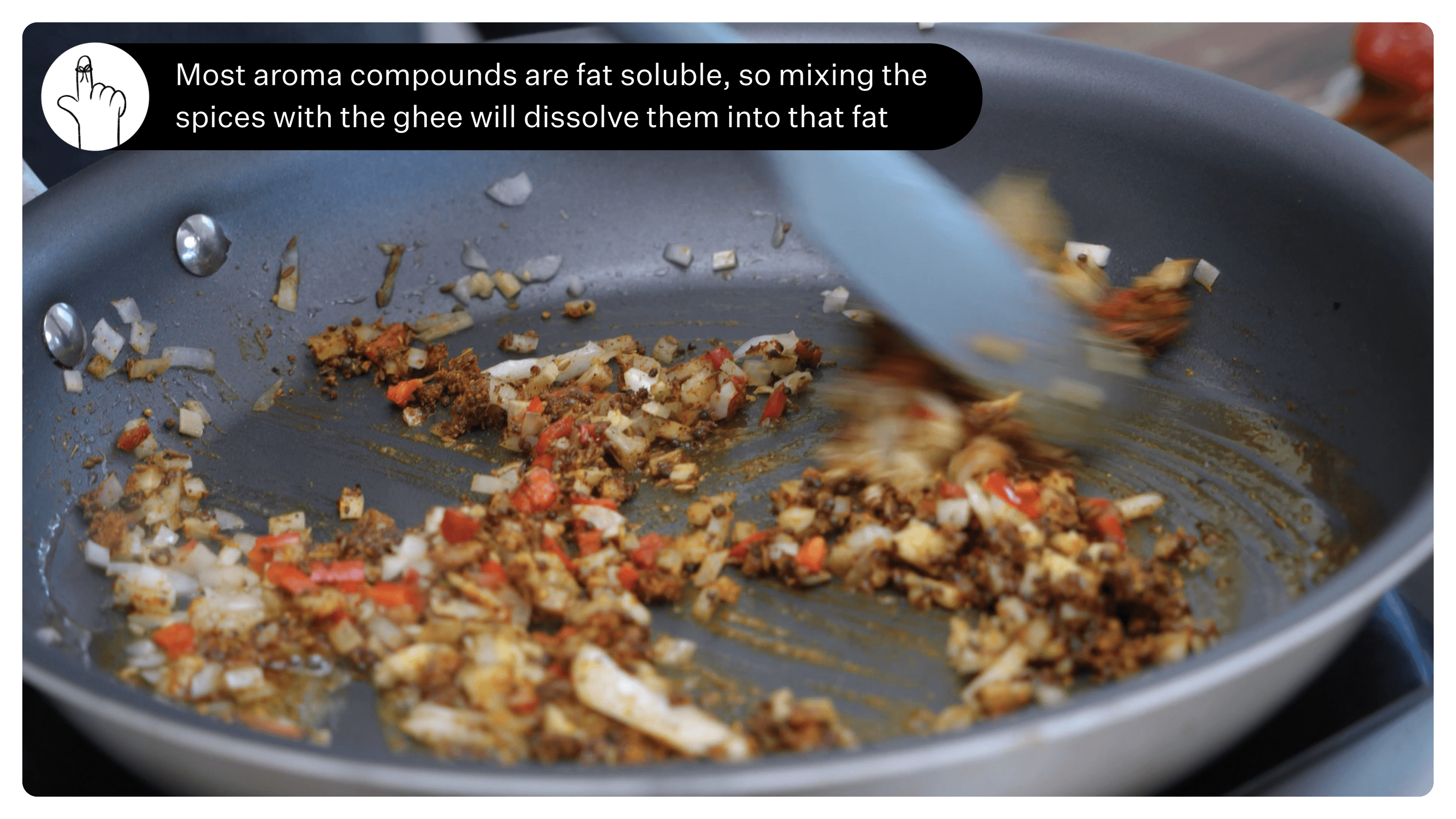
Spices change with heat, time, and when exposed to fat or water. You can manipulate the flavor or potency of a spice by toasting it before cooking, adding it at the beginning, during, or after cooking.
If you only add spices at the beginning of cooking a dish, you’re missing out on many layers of potential spice flavor.
Experiment to try
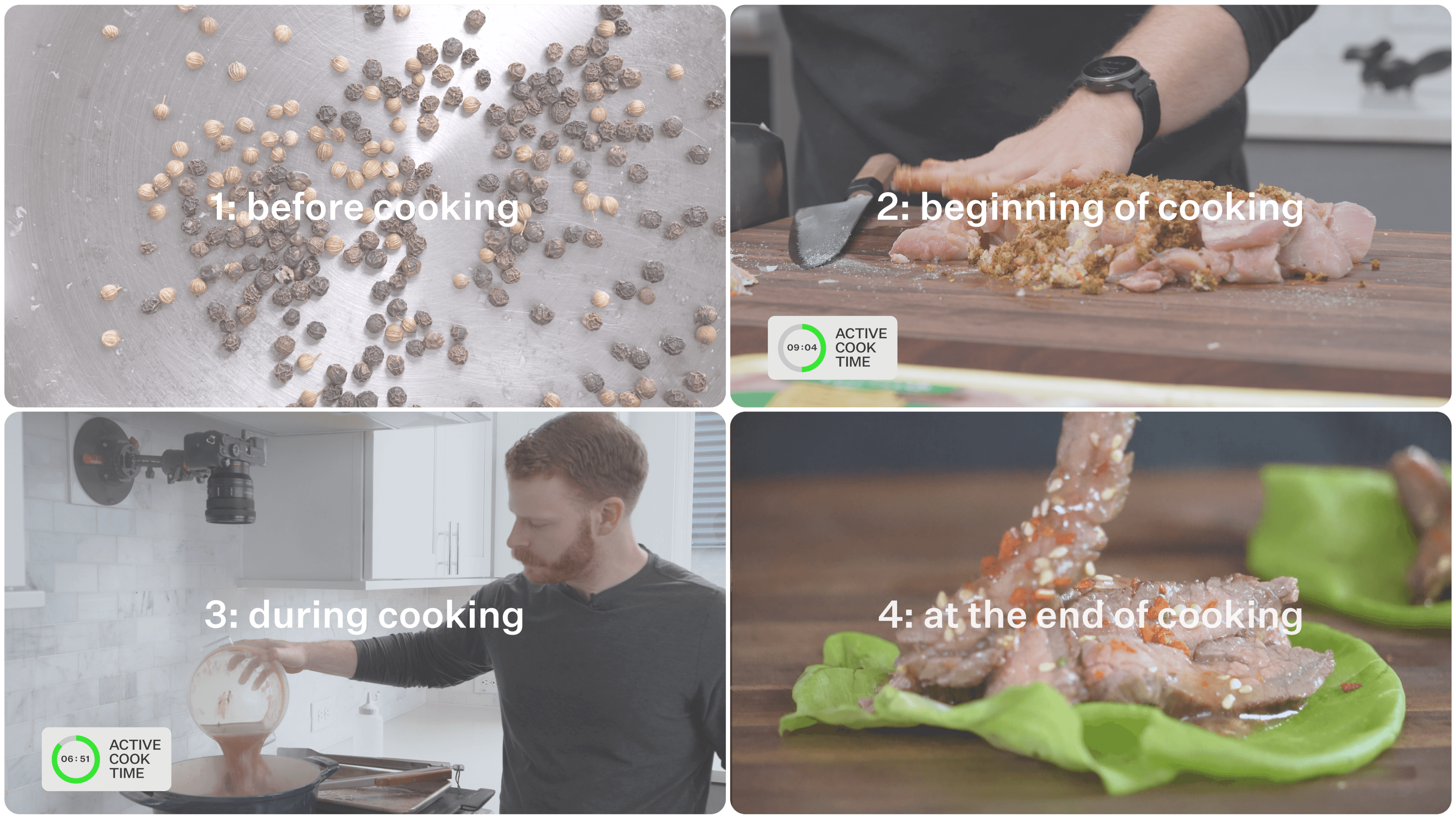
Take your favorite recipe that uses spices. Make it a few times and try adding in the spices at different points or in different combinations:
- Toasting the spices in a dry pan before cooking.
- Blooming the spices in oil at the beginning of cooking
- Adding spices to the body of the dish during cooking
- Adding a sprinkle of spices to the dish after cooking.
Observe how cooking the spices at different times changes the final dish.
Application
Don’t be afraid to add spices at multiple points in the cooking process to maximize their flavor.
Add an extra sprinkle of spices to the finished dish as a garnish. This is commonly done in Indian cuisine with garam masala.
Toast spices before cooking to learn how their flavor changes, and notice if spices release their flavor better in oil (at the beginning of cooking) or water (during cooking when mixed with other ingredients).
Mistake 5 - Being afraid to experiment
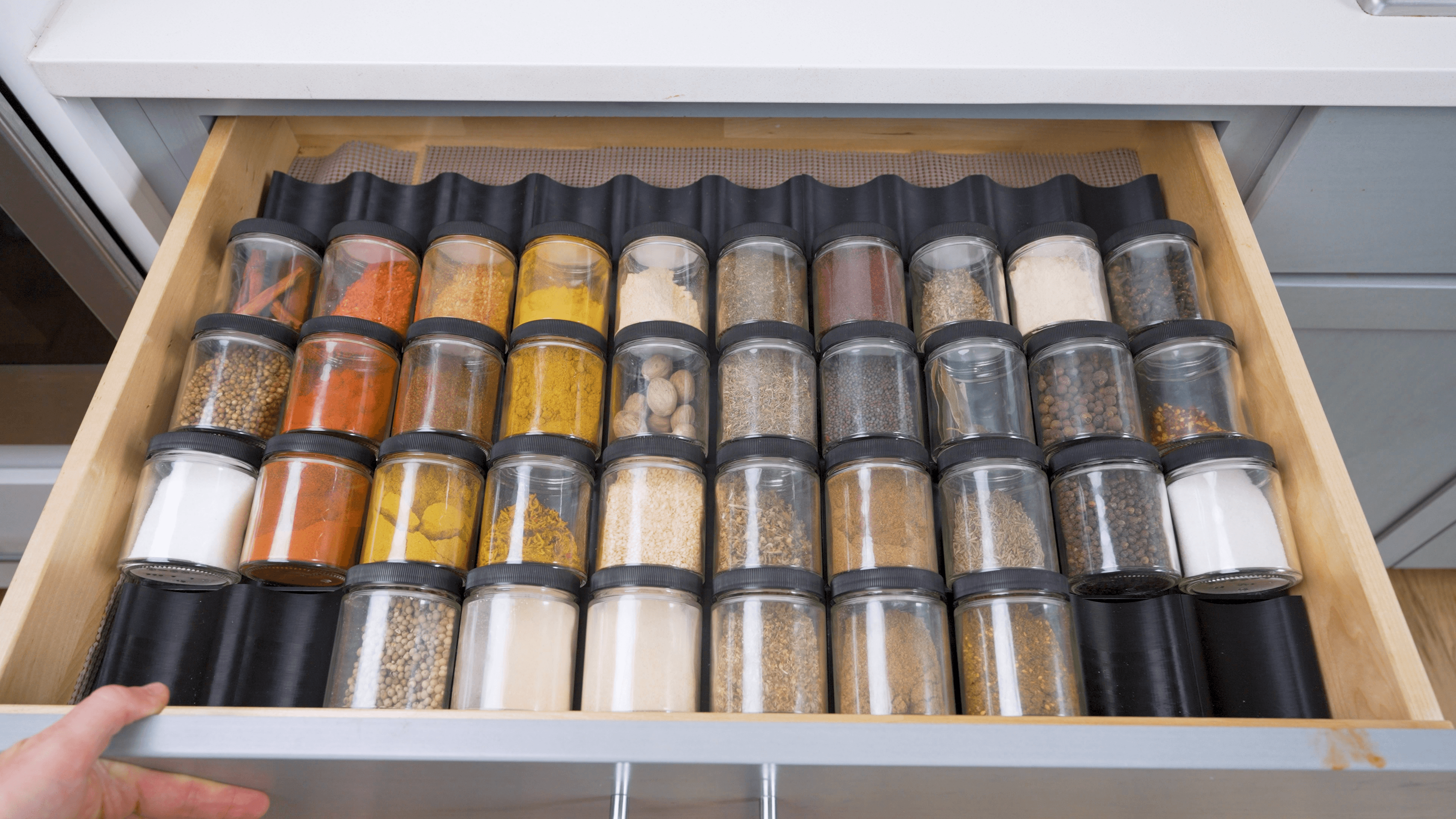
People today treat spice blends and recipes like sacred or authentic formulas, but the truth is: nobody knew any of the science behind spices for most of human history.
Experiment to try
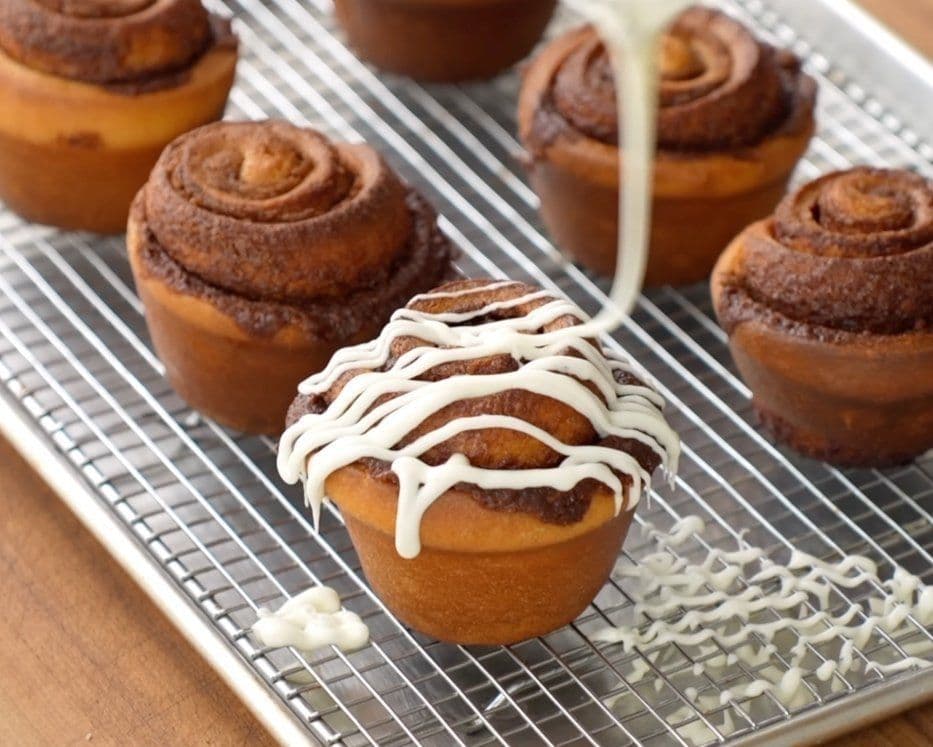
- Try a cinnamon roll recipe, but swap the cinnamon for a different spice instead (like ground cumin or allspice).
- Taste and observe, noting your expectations. What is surprising? Are certain spices really only for sweet or savory applications?
Application
We’ve built up expectations and biases about certain spices. Keeping an open mind and trying new combinations can unlock creativity and flavors you’ve never tried before.
Don’t be afraid to make something with what you have in the spice drawer already. See what happens! Don’t be tied to the exact spices called for a in a recipe, and don’t feel like you have to stick to an “authentic” combination.

Free Spice Guide
Join The Mouthful Newsletter to receive our essential spices list pdf.
Just subscribe to our weekly newsletter where 60,000+ readers get lifestyle protocols, recipe frameworks, Q&A from expert home cooks, and cooking trends explained.
We hate spam too. Unsubscribe anytime.

